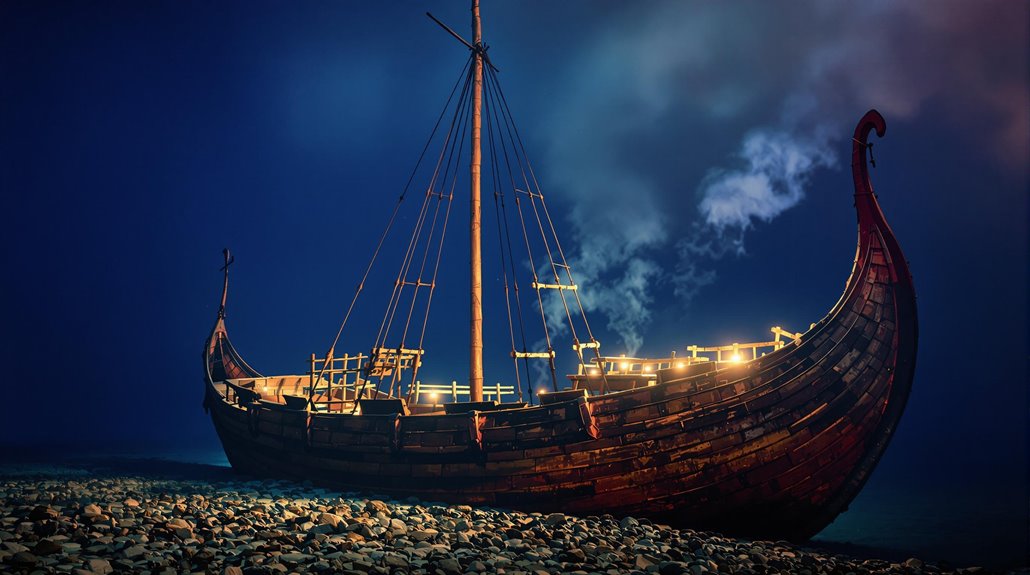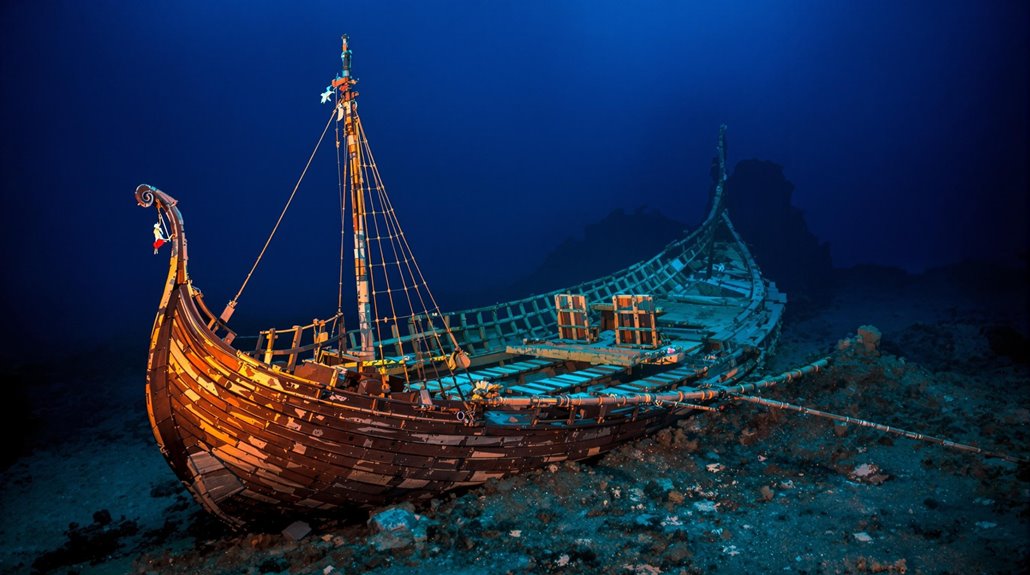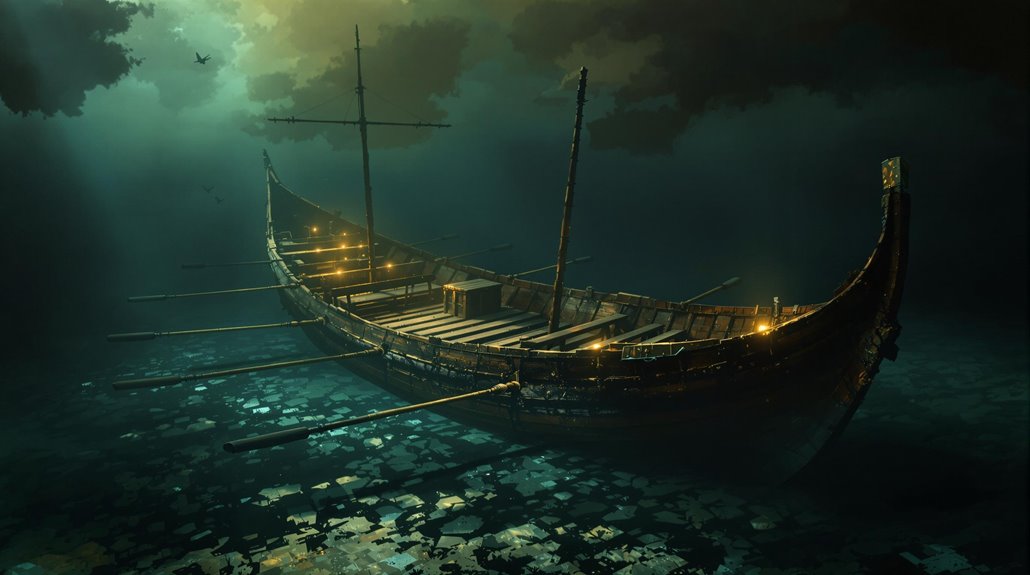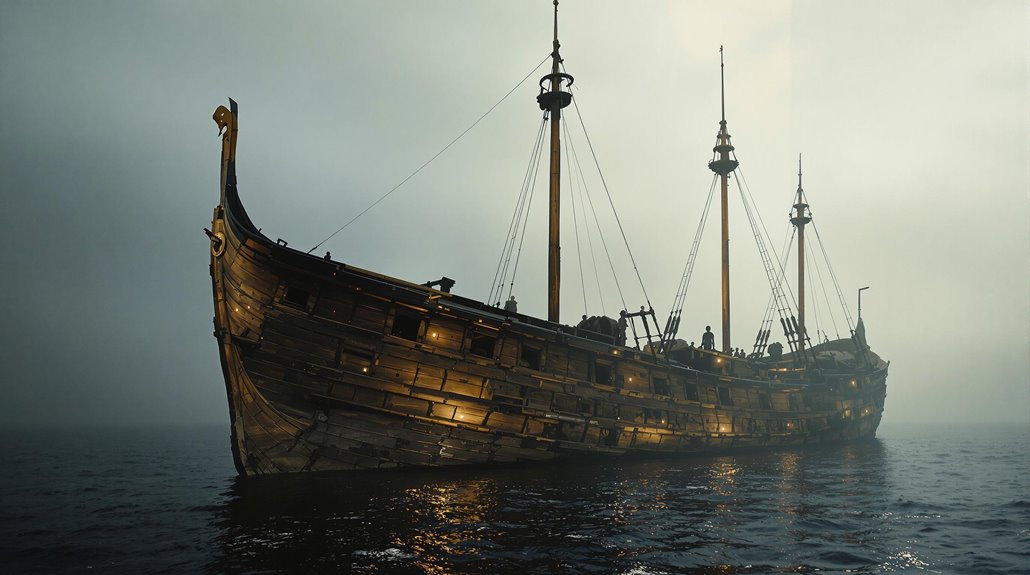An Ancient Shipwreck Remains Nearly Intact After 2,400 Years
You'll find the Black Sea's most extraordinary ancient shipwreck lying silently in its depths, a Greek merchant vessel that's survived an incredible 2,400 years. Unlike most underwater discoveries that deteriorate over time, this 75-foot wooden ship maintains its original form, from its sturdy mast to its well-preserved rowing benches. The secret behind this remarkable preservation reveals a fascinating interplay of science and history that transforms our understanding of ancient maritime trade.
The Discovery That Rewrote Maritime History

While archaeologists have discovered numerous ancient shipwrecks over the years, none compare to the remarkable 2017 find off Bulgaria's Black Sea coast.
You'll be amazed to learn that this Greek merchant vessel, discovered 50 miles offshore, has survived intact for an astounding 2,400 years. The Black Sea Maritime Archaeology Project team located the wreck during their final research phase, using cutting-edge laser scanning and photogrammetry techniques.
The discovery's impact on maritime archaeology can't be overstated. At 75 feet long, with its mast, rudders, and rower benches perfectly preserved, the vessel offers an unprecedented window into ancient trade and shipbuilding practices. A team of international archaeologists has been collaborating extensively to study and document this extraordinary find.
It's one of 60 shipwrecks found during the project, but its age and pristine condition make it the most significant maritime discovery of our time. Like the recently discovered Sicilian wreck, the vessel was constructed using the shell-first technique, creating a remarkably durable structure.
Perfect Preservation in the Black Sea's Depths
Because the Black Sea's depths create a unique oxygen-free environment, ancient shipwrecks remain remarkably preserved in its dark waters. Below 150 meters, you'll find a rare phenomenon where saltwater and freshwater layers don't mix, creating anoxic conditions that prevent wood-eating organisms from destroying ancient vessels. The region's maritime activity peaked during late antiquity, when sea trading was most intense.
This perfect setting for organic preservation has revolutionized marine archaeology. You can see ships' hulls, masts, and even delicate items like ropes and cargo remaining exactly as they were when these vessels sank thousands of years ago. The project's discovery of over 60 shipwrecks has provided an unprecedented window into maritime history.
Today's advanced technology, including ROVs and 3D photogrammetry, allows scientists to study these time capsules without disturbing them. From these pristine wrecks, you're able to glimpse incredible details about ancient shipbuilding techniques and trading patterns that were previously lost to history.
A Window Into Ancient Greek Seafaring
Through advanced underwater archaeology, you can now peek into the sophisticated world of ancient Greek seafaring.
You'll discover a civilization that mastered ancient navigation using celestial observations and intimate knowledge of winds and currents. From their earliest days, coastal Greek cities relied heavily on maritime activities for survival and growth. Their revolutionary ship designs, like the trireme with its three-tiered oarsmen and bronze ram, showcased their naval ingenuity. Advanced triremes could achieve speeds of 8 mph while under oar power.
These seafaring Greeks dominated maritime trade with merchant vessels capable of carrying 500 tons of cargo across vast Mediterranean routes.
They built their ships using an innovative shell-first method, joining planks with wooden tenons and mortises. When not engaging in naval warfare tactics like diekplous or periplous, their ships utilized square-rigged sails for efficient transport.
This maritime expertise wasn't just about moving goods—it was the backbone of Greek civilization's expansion and prosperity.
Scientific Research and Protection Efforts
Modern science has revolutionized our ability to study ancient shipwrecks with unprecedented detail.
You'll find cutting-edge technologies like SeaBED autonomous vehicles and side scan sonar providing high-resolution 3D images of sites that were once impossible to explore. These tools help scientists overcome the challenges of deep-water darkness and hostile environments.
Through scientific collaboration, researchers can now analyze DNA from empty amphorae to identify their original contents and study tin isotopes to trace metal origins. Sudden wrecking alters seabed currents, affecting how artifacts are distributed across the ocean floor.
International teams combine expertise in archaeology, biology, and geology, as seen in projects like the PHAEDRA 2006 Expedition. The Greek merchant ship discovered in the Black Sea demonstrates how deep waters preserve ancient vessels remarkably well.
Meanwhile, underwater preservation efforts are strengthened by UNESCO's Convention, which protects shipwrecks over 100 years old.
This legal framework promotes in situ preservation and responsible documentation while preventing looting that could destroy valuable historical information.
The Cultural Impact of a Classical Greek Vessel

While ancient Greek pottery has long provided artistic glimpses of classical vessels, the discovery of this 2,400-year-old shipwreck offers unprecedented validation of historical maritime depictions.
You'll find striking similarities between this ship's design and those painted on artifacts like the "Siren Vase" in the British Museum, confirming the accuracy of ancient artists' work.
The vessel's cargo reveals extensive maritime trade networks that connected distant shores, from Spain to Asia Minor.
Located 40 to 50 meters beneath the surface near Antikythera island, the wreck has preserved vital clues about ancient seafaring practices.
You can trace cultural connections through the diverse items discovered aboard, showing how seafaring merchants bridged vast geographical gaps.
The discovery was made during an extensive 800-square-mile survey of the seabed conducted by researchers.
This remarkable find doesn't just represent a technological achievement; it demonstrates how ancient Greek ships served as essential links between civilizations, fostering economic and cultural exchange throughout the Mediterranean and Black Sea regions.










